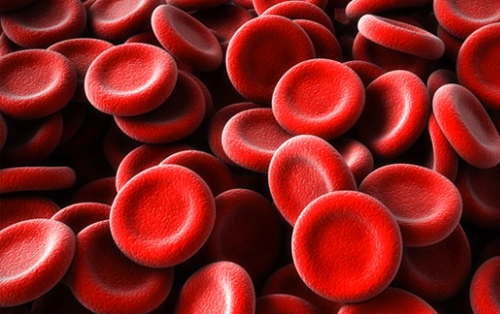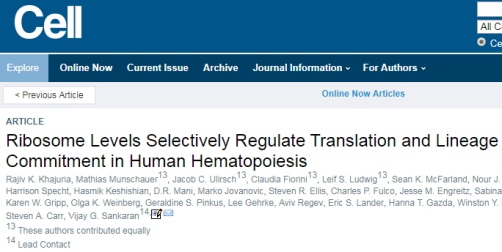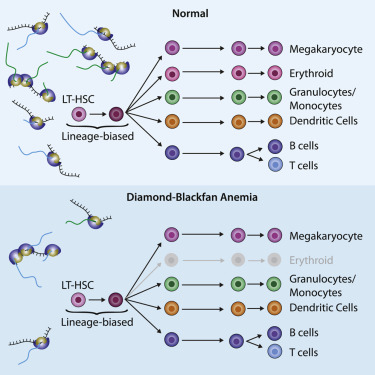Release date: 2018-03-23

Recently, the "Cell" journal published an article entitled "Ribosome Levels Selectively Regulate Translation and Lineage Commitment in Human Hematopoiesis", revealing for the first time: the "workshop" in charge of protein production in the cell - ribosomes Associated with hematopoietic stem cell differentiation.

DOI: https://doi.org/10.1016/j.cell.2018.02.036
Across 80 years of research
In 1938, Dr. Louis Diamond and Dr. Kenneth Blackfan of Boston Children's Hospital first described the Diamond-Blckfan syndrome. The typical symptom of this serious and rare blood disease is anemia, which is blocked by erythropoiesis, which affects systemic oxygen delivery.
Forty years ago, Dr. David Nathan of Boston Children's Hospital believed that the disease specifically affected the process by which blood stem cells produce mature red blood cells. For the next 10 years, Dr. Stuart Orkin, who also worked at Boston Children's Hospital, discovered a protein called GATA1 that proved to be a key factor responsible for the production of hemoglobin, an indispensable protein for red blood cells.
Interestingly, in recent years, genetic analysis has shown that some DBA patients carry a mutated gene that blocks GATA1 expression. Now, the final part of the "DBA Pathogenic Mechanism" puzzle was unveiled by scientists at Boston Children's Medicine.
“This disease has been in the hospital for many years,†said team leader Viology Dr. Vijay Sankaran, who is the head of the team, and now, “Now, we can move on to the next step – treatment.â€
Find answers from natural mistakes
Previous studies have shown that many patients with Diamond-Blckfan syndrome carry mutations in the ribosomal protein gene. But the question is: Are these mutations associated with GATA1 protein related? Why only affect the maturation of red blood cells? For DBA patients, other blood cells, such as platelets, T cells, and B cells, develop well even if they also carry mutations.
“Is the ribosome mutation a change in its composition or quantity? This has been controversial,†Sankaran explained. Now, they know that the answer is the latter.

Image source: Cell Journal
By analyzing blood cell samples from patients with Diamond-Blckfan syndrome, the Sankaran team found that the number of ribosomes in blood cell precursor cells directly affects cells' efficient expression of GATA1 protein (hemoglobin production, a key element in red blood cell development).
The Sankaran team finally put all the "fragments" into a complete picture - the reduction in the number of steroids in the precursor cells will suppress the expression of GATA1 protein and ultimately prevent its differentiation into normal red blood cells.
Gene therapy
The new findings support the hypothesis that GATA1 proteins in hematopoietic progenitors help stimulate their differentiation into red blood cells. If there are not enough ribosomes to support the expression of the GATA1 protein, these progenitor cells will not be able to initiate a signal for erythrocyte development.
Sankaran believes that this result gives the opportunity for "gene therapy to correct GATA1 deficiency." They hope to be able to verify this hypothesis. Although bone marrow transplantation can treat Diamond-Blckfan syndrome, Sankaran believes that gene therapy has certain advantages because it uses the patient's own cells (modified) to avoid the potential for immunological rejection of the transplant.
"What's important is that we can find the secrets of developmental biology from patients. Genetic errors give us the opportunity to analyze complex health mechanisms and find connections," Sankaran concludes.
Source: Bio-Exploration
Vet Autoclave,Best Dental Autoclave,Portable Dental Autoclave,Dental Sterilization Machine
ZHEJIANG FOMOS MEDICAL TECHNOLOGY CO.,LTD. , https://www.ifomos.com